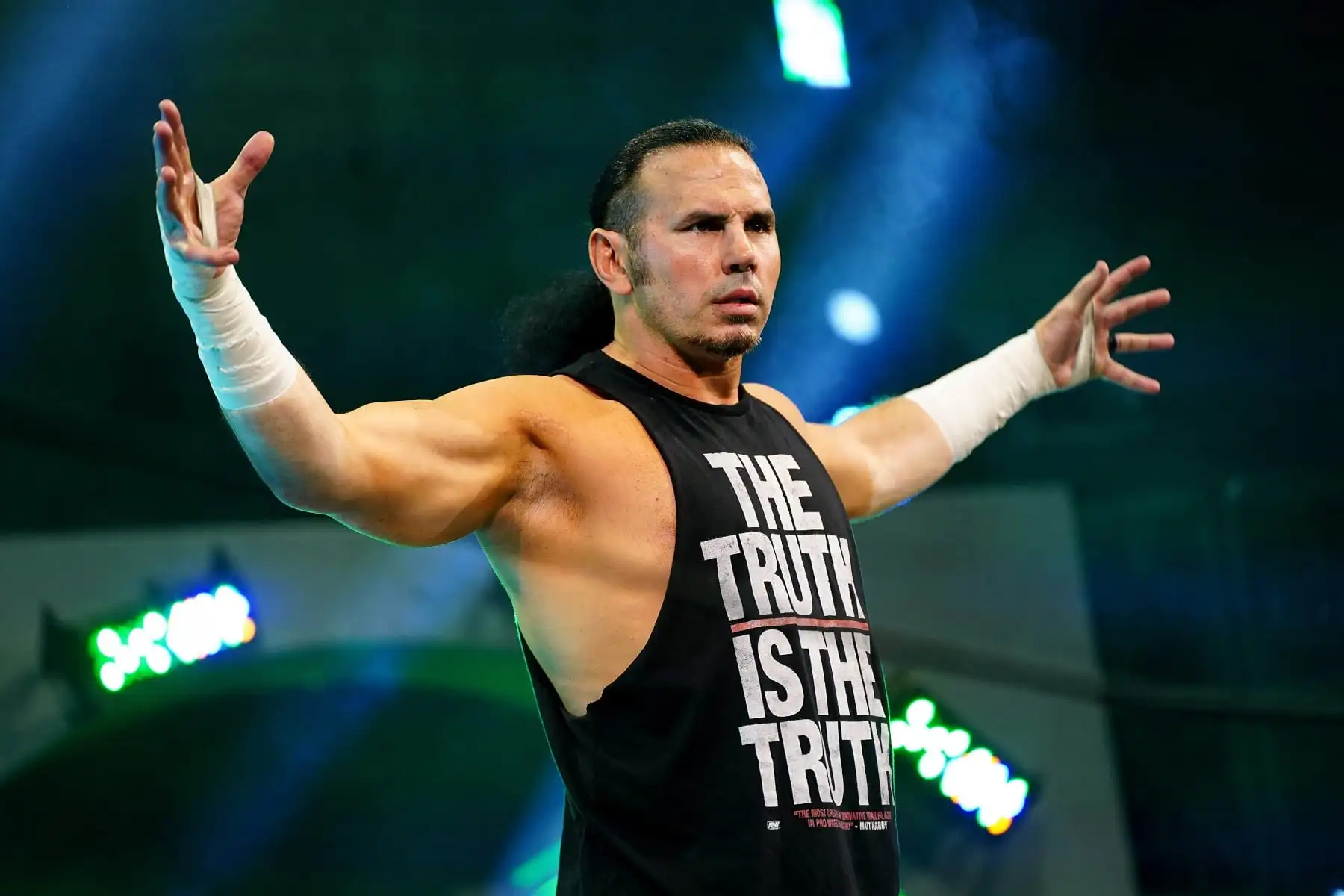
AEW’s Matt Hardy has spoken candidly about the long-term effects wrestling has had on him, which includes a lapse in his memory.
On a recent edition of his “The Extreme Life of Matt Hardy” podcast, Hardy discussed how he intends to work a safer style these days as he’s well aware of the impact wrestling has had on him. He said,
“I know my memory is nowhere near as good as it used to be. I am not as fast as I used to be… I have thought about it a lot and how I’m going to be. I feel like one of the important things is that I am aware, so that allows me to still do things to protect myself.
“These AEW fans, you know, if they’re looking for me to go out there and take this high-angle bump on my head, I’m just not gonna do it. I wrestle a solid, clean match. That’s what I do, but I do protect myself. I mean, I have more than sacrificed so much of myself for the pro wrestling business. It’s my job to go out there, and I’m an entertainer more than an athlete in this day and age.”
Hardy’s time with AEW has not been incident-free. During a match with Sammy Guevara, Hardy landed head-first onto concrete.
Despite this, Matt was allowed to continue, with many questioning whether AEW management had put Hardy’s health at risk after the bump.
Professional wrestling is a physically demanding sport that often takes a toll on the bodies and minds of its performers. AEW’s Matt Hardy recently opened up about the long-term effects wrestling has had on him, including memory lapses. In a podcast episode titled “The Extreme Life of Matt Hardy,” he discussed his intention to work a safer style in order to protect himself.
Hardy acknowledged that his memory is not as sharp as it used to be and that he is not as fast as he once was. This realization has led him to carefully consider how he approaches his matches and prioritize his safety. He believes that being aware of his limitations allows him to take measures to protect himself in the ring.
While Hardy understands that AEW fans may expect him to perform high-risk maneuvers, such as taking dangerous bumps on his head, he has made the decision not to engage in such risky behavior. Instead, he aims to wrestle a solid, clean match while still entertaining the audience. He emphasized that he has already sacrificed a great deal for the wrestling business and it is now his responsibility to prioritize his own well-being.
However, despite Hardy’s intentions to work safer, an incident occurred during a match with Sammy Guevara where he landed head-first onto concrete. Many fans and critics questioned whether AEW management had put Hardy’s health at risk by allowing him to continue wrestling after such a dangerous bump.
This incident highlights the ongoing debate surrounding the responsibility of wrestling promotions in ensuring the safety and well-being of their performers. While professional wrestlers are undoubtedly skilled athletes, they also face significant risks every time they step into the ring. It is crucial for promotions like AEW to prioritize the health and safety of their talent, implementing protocols and guidelines to minimize the potential for serious injuries.
In recent years, the wrestling industry has taken steps towards improving safety standards. Promotions have implemented concussion protocols, enforced stricter rules regarding high-risk moves, and provided better training and support for their performers. However, incidents like the one involving Matt Hardy serve as a reminder that there is still work to be done in protecting the physical and mental health of wrestlers.
The discussion sparked by Hardy’s candid revelations about the long-term effects of wrestling on his memory brings attention to an important issue within the industry. It serves as a reminder that the physical toll of professional wrestling can have lasting consequences on the performers, even after they retire from the ring.
As fans, it is essential to appreciate and support the wrestlers’ dedication and athleticism while also advocating for their safety. By demanding safer working conditions and holding promotions accountable for the well-being of their talent, we can contribute to a healthier and more sustainable future for professional wrestling.
